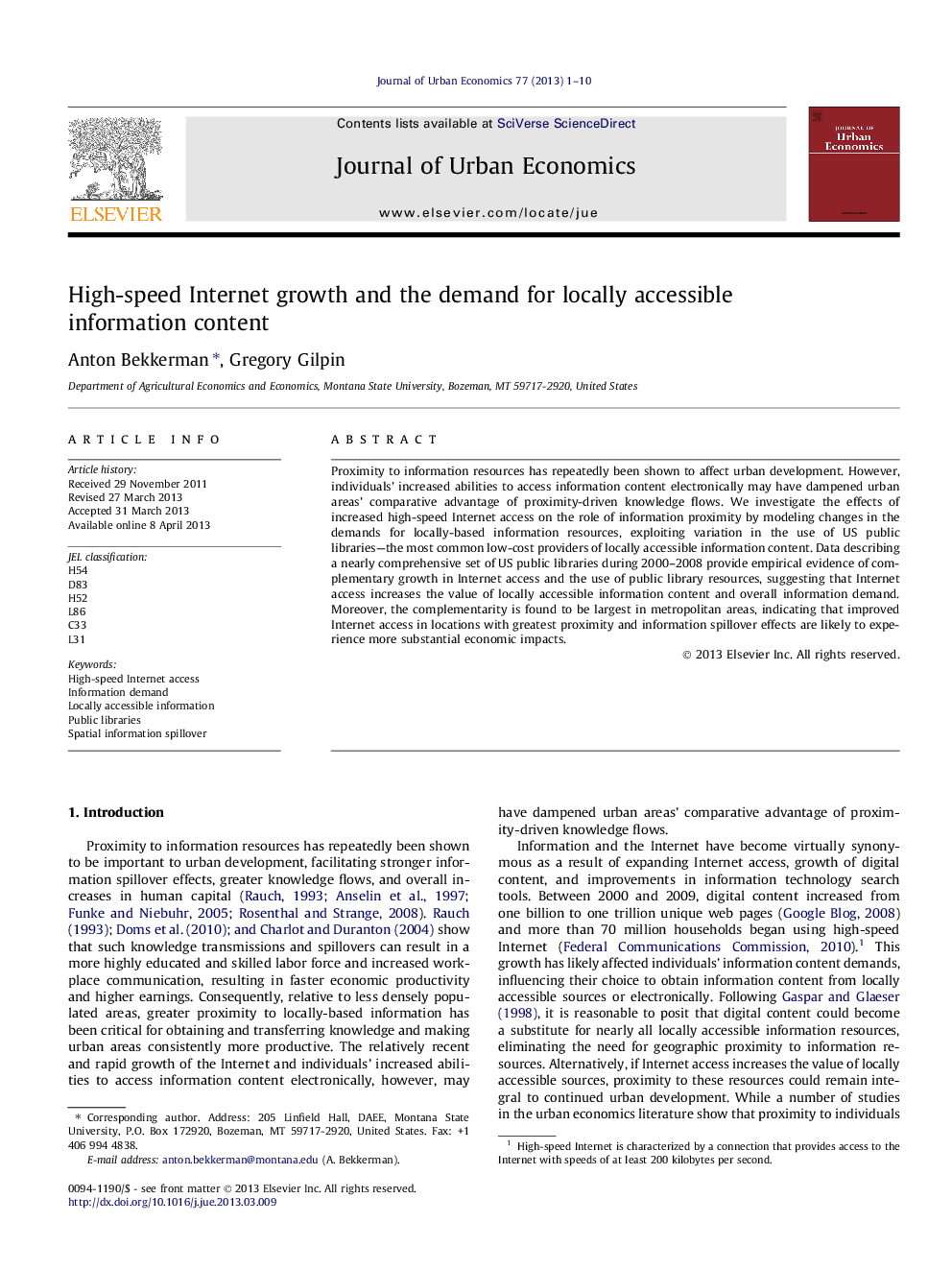| Article ID | Journal | Published Year | Pages | File Type |
|---|---|---|---|---|
| 971534 | Journal of Urban Economics | 2013 | 10 Pages |
Proximity to information resources has repeatedly been shown to affect urban development. However, individuals’ increased abilities to access information content electronically may have dampened urban areas’ comparative advantage of proximity-driven knowledge flows. We investigate the effects of increased high-speed Internet access on the role of information proximity by modeling changes in the demands for locally-based information resources, exploiting variation in the use of US public libraries—the most common low-cost providers of locally accessible information content. Data describing a nearly comprehensive set of US public libraries during 2000–2008 provide empirical evidence of complementary growth in Internet access and the use of public library resources, suggesting that Internet access increases the value of locally accessible information content and overall information demand. Moreover, the complementarity is found to be largest in metropolitan areas, indicating that improved Internet access in locations with greatest proximity and information spillover effects are likely to experience more substantial economic impacts.
